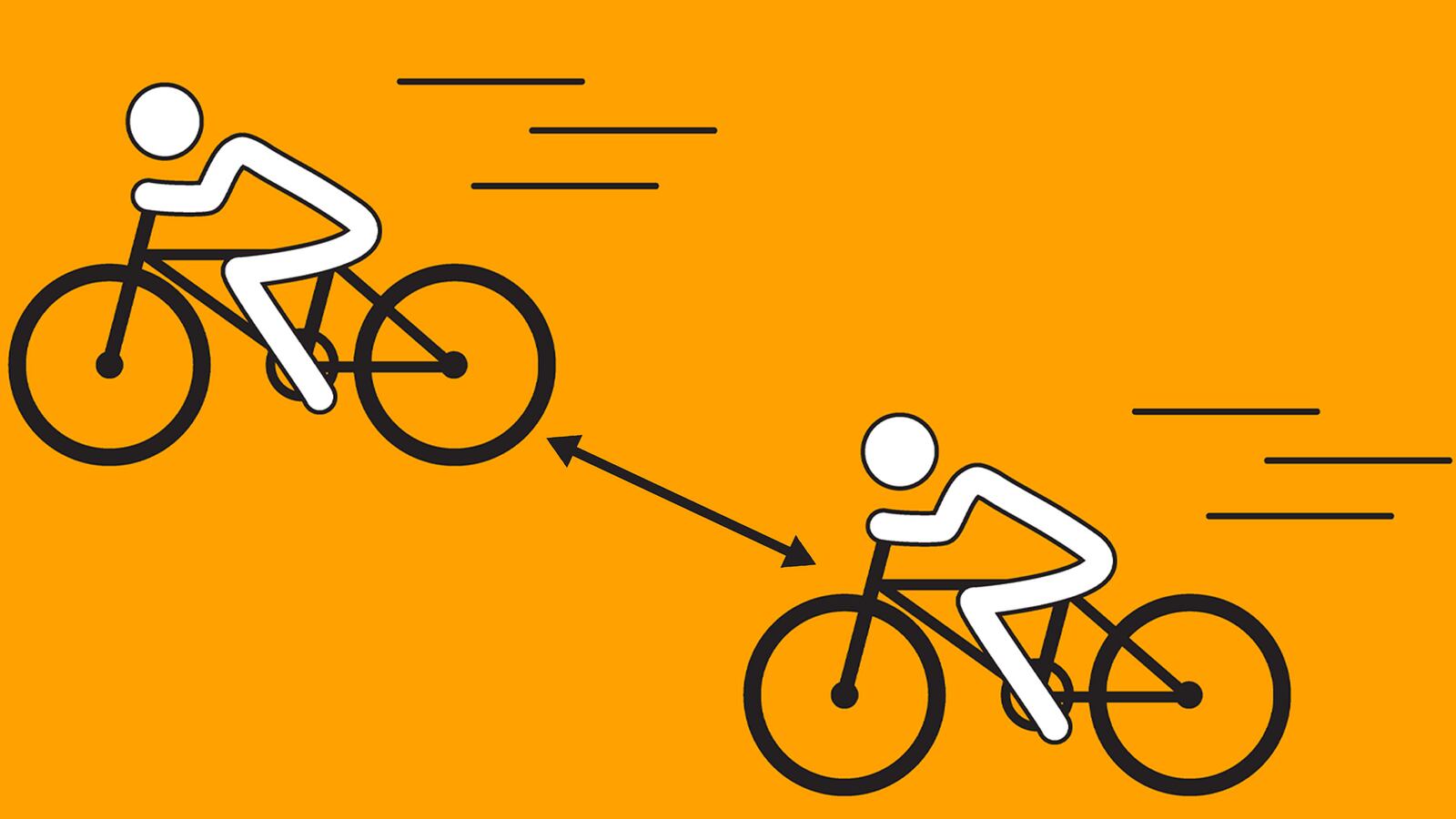Descending the tight, winding roads of the San Juan Mountains from Wolf Creek Pass at the Continental Divide, I passed a long-distance cyclist with his panier-laden bike, climbing upward at a snail’s pace. The highest point he could reach was nearly 11,000 feet. I was in awe that he was trying it—imagining the risk of not being seen by vehicles rounding tight corners, or facing heat exhaustion.
I was also happily in an SUV with air-conditioning and snacks.
More people are seeing longer bike rides as a way to get away from it all—a type of social distancing. If the focus is less on setting the ultra long-distance record of your lifetime and more on crafting your own meaningful and tailor-made cycling experience—which also takes into consideration where you are at, and what your skillset is—cycling longer distances can be a safer form of summer travel. So if you’ve set your eyes on a two-wheeled getaway, here’s how to plan during a pandemic and some ideas to inspire your adventures.
First, the reality check. I’m not going to lie to you: any trip during the coronavirus pandemic cannot look like your past travels.
Yes, cycling longer distances is a way to challenge yourself physically, to fight depression, to find those beautiful landscapes, and improve your body’s overall health. That is why bike sales and rides are skyrocketing during the pandemic.
According to a recent unpublished survey supplied to The Daily Beast by Rails to Trails Conservancy (RTC)—an organization building a network of trails from former railways—the outdoors is playing an important role in our pandemic lives. Fifty percent of those surveyed say they “go outdoors about the same as before,” with almost 32 percent saying they go out “a lot more” or “more than” before. Of those surveyed, 65.2 percent say they use their local trails for outdoor exercise.
It is no surprise, then, to see more people out on bikes and in parks. Long distance cycling in our coronavirus-ridden world, however, is still probably best done with either those you already live with, or as a solo cyclist—not persistently in large groups. In other words, if you’re a fan of solo travel, then this might be your wheelhouse.
Next, the idea of what encompasses long distances can be a relative. If you ride 5-10 miles on average, then going 25-50 is going to feel like a long distance. There are, of course, those massively long cycling tours designed for crossing a country, multiple countries, or with less of a mission of distance and more of finding something—like birding. During a pandemic, however, it is worth thinking about distance cycling with some flexibility.
For more experienced cyclists, a century ride—a distance of 100 road miles (160.9 km) in a day (5-7 hours)—is probably minimum for a true long-distance ride. Significantly longer, epic bike rides across the country might need to be reined in to the length of a century ride. If you’re crossing state, county, or even country lines, be sure to know the quarantine status of your destination. Some states still have 14-day isolation requirements for travelers, particularly if you’re from harder-hit locations like New York. What is closed now might be open before you get there, but it might also close if there is a sudden second wave breaking out. For example, new information is pointing to an increase in COVID-19 cases in states that opened up at Memorial Day, and with fewer restrictions
No one wants to spend days on a bike only to be told they now have to isolate for two weeks. Does your destination even want you there right now? If not, consider a different one. You don’t want to put undue stress on a rural health system if you get hurt. Consider travel insurance if you are riding far enough that you’ll be out of network and have someone ready to get you in an emergency.
“Small rural communities just can’t deal with people coming into their community right now,” said Ginny Sullivan, director of travel initiatives at Adventure Cycling Association, during the recent one-year anniversary Zoom event for the Great American Rail Trail, a project launched by Rails to Trail Conservancy to allow cyclists to travel nearly 4,000 miles from coast to coast. So be sure to know the status of your destination.
Next, cycling any significant distance during normal circumstances takes preparation—building up physical skill, bringing the right amount of water and food, having a change of clothes, tubes and tools, etc.—but during the coronavirus pandemic, it takes extra steps.
Bring masks and sanitizer, but also think beyond them.
If you’re on an established cycling trail, don’t assume that park restrooms will be open along the way. If they are open, don’t assume that someone is cleaning them. In other words, bring wipes or spray with you to clean surfaces. Check on park restroom statuses and alternative stops before you leave. If you’re going into wilder and more remote territory, think like a hiker and be prepared to bury your waste and leave no trace.
As with any distance riding, you’ll want to map out your ride ahead of time, using apps like Trail Link or maps from Adventure Cycling Association. And like any trip, if your ride is long enough that you’re staying the night somewhere, you’ll need to find places to stay and places to get food.
For stays, while hotels are moving to deep cleaning and contactless check-ins, also consider the possibility of camping during your trip. It helps to keep you in fresher air along the way. For food, you might not be able to stop in that small town you love and just eat at any restaurant as you once did. Find out which restaurants are open on your trip, which have patio seating, and be sure to have the right apps for ensuring carry-out.
Lastly, you may face the temptation to take extraordinarily long trips, but during a pandemic, it is best to think of your current longer-distance options within your more immediate region. Aside from cycling ultra distances to challenge us physically, we all cycle for various reasons, and for summer travel it might be to take in beautiful views, experience wildlife, see interesting towns, or just to decompress in nature.
In a normal world, there are must-do routes for seeing that beauty, bucket-lister trails for the destinations. A pandemic is your big chance to be creative. How might you replicate a popular longer-distance experience regionally?
In Grand Teton National Park, for example, where there is an unparalleled view of the Teton Mountain Range, you can find 67 local miles of trails, including loops that provide not only access to the city of Jackson, but also (using the North Pathway Trail) the national park, with opportunities to see elk, pronghorns, and bison along the prairie, among other wildlife.
Think of where the wildlife opportunities are in your region and create a trail that allows you to check them off on a list and get photos.
Across the world there are mountain bike trails with incredible views, with some longer than others or that can be combined to make longer trips. Kincaid Park in Anchorage, Alaska, has 45 miles of trails with coastal and forest views, which can be combined with street riding throughout the city and other cycling trails, like the Tony Knowles Coastal Trail, adding 11 miles. Make a week of it and you can pick up trails at Denali National Park and camp.
Trails within short driving distance of each other can become an itinerary for a week, while keeping the road-tripping to a minimum.
Additionally, consider cycling with a theme or story in mind.
Charles Darwin, for example, might have made the Galapagos Islands famous for its finches and the evolutionary story it tells, but cycling them provides an alternative way to experience that history and there are bike tours that enable you to see the islands that way. During the pandemic, travel to the Galapagos specifically might not be ideal, but every part of the globe has an interesting, and ancient, history behind it.
What history or what geological interests are there that can become the theme of your ride?
While cycling famous trails and locations or following pre-done maps can be useful, never underestimate the satisfaction of mapping your own route to get in your 100 miles. For me, for example, most local rides in Ohio are flat and small towns, but with the right combination of trails I can pass through a 100 miles of small towns, forests, sand dunes, and marshes—all with camping options.
Mapping your own tour for a multi-day trip can be exciting and easier. If you stay in-state, you have a better chance of knowing the local rules during the pandemic. You could even combine your itinerary of cycling with daily, very minimal day only road trips, allowing you to organize by themes.
If you prefer a single day of long-distance cycling, however, look to century rides in your region.
Each year locations have their own mapped century ride you can sign up for and join as part of a group—and depending on what time of the year these rides occur, the pandemic might have already cancelled them. But the maps for these rides are frequently still online for you to turn into your own trip at any time.
For example, in Illinois there is the relatively flat North Shore Century ride loop, which takes you from Evanston into Wisconsin and back, through neighborhoods, countryside, and along the blue waters of Lake Michigan. Even though the annual ride is canceled, that route and their route library can be found online.
In California, the Asti Tour de Vine is a century ride that will take you through Northern Sonoma County wine country. The tour is held in the fall, and has yet to be cancelled, but the maps are available online and could be followed independently. Go for the view and check on COVID-19 restrictions before you leave. Some wineries are moving toward outdoor tastings and appointments.
In Maine, the once Maine Century Ride was renamed for 2020 as the Maine Lighthouse Experience, and it offers a scenic 100 miles through towns like Kennebunkport, along scenic coastal views, and to iconic lighthouse destinations. This year’s ride is still on for September 5-12, but they are offering to help you “choose your own path, distance, and experience.” Maps are also online should you want to customize your own trip at any time.
You can even turn your century ride trip into a two-fer by getting individuals to sponsor your ride for charity through places like EveryDayHero or GoFundMe, or by looking for upcoming sponsored rides promoted by charities.
Additionally, depending on where you live, you can start long-distance segments of the Great American Rail Trail, where each year—especially when the pandemic is resolved—you can pick up other segments of the trail with the goal of cycling the entire trail when it is finished.
Great Allegheny Passage, for example, is a section of the Great American Rail Trail (map) that passes from Cumberland, Md. to Pittsburgh, and it covers 150 miles of the Great American Rail Trail and if combined with the Chesapeake & Ohio Canal National Historical Park trail (184.5 miles), you can have a scenic bike ride of 334 miles that takes you to Washington.
While you're there, by the way, you can petition your representatives for more money for trails.
In other words, break out the apps and maps, and start a Google doc for your itinerary, and think outside the usual tourism box. Depending on how well you account for safety and your own comfort levels, you could still have a fantastic summer trip with minimal contact. Cycling longer distances can become a form of travel that liberates your vacation creativity.

